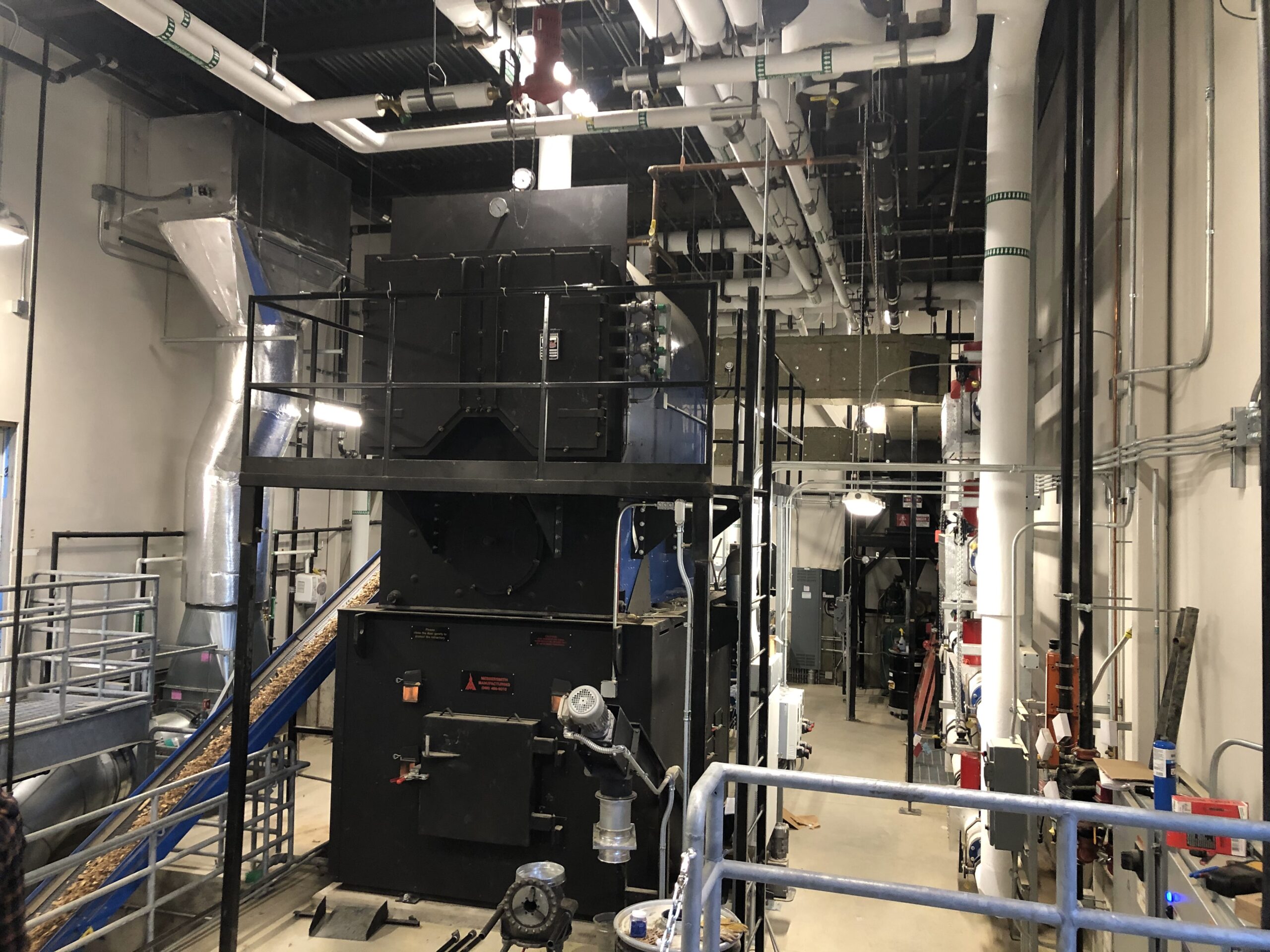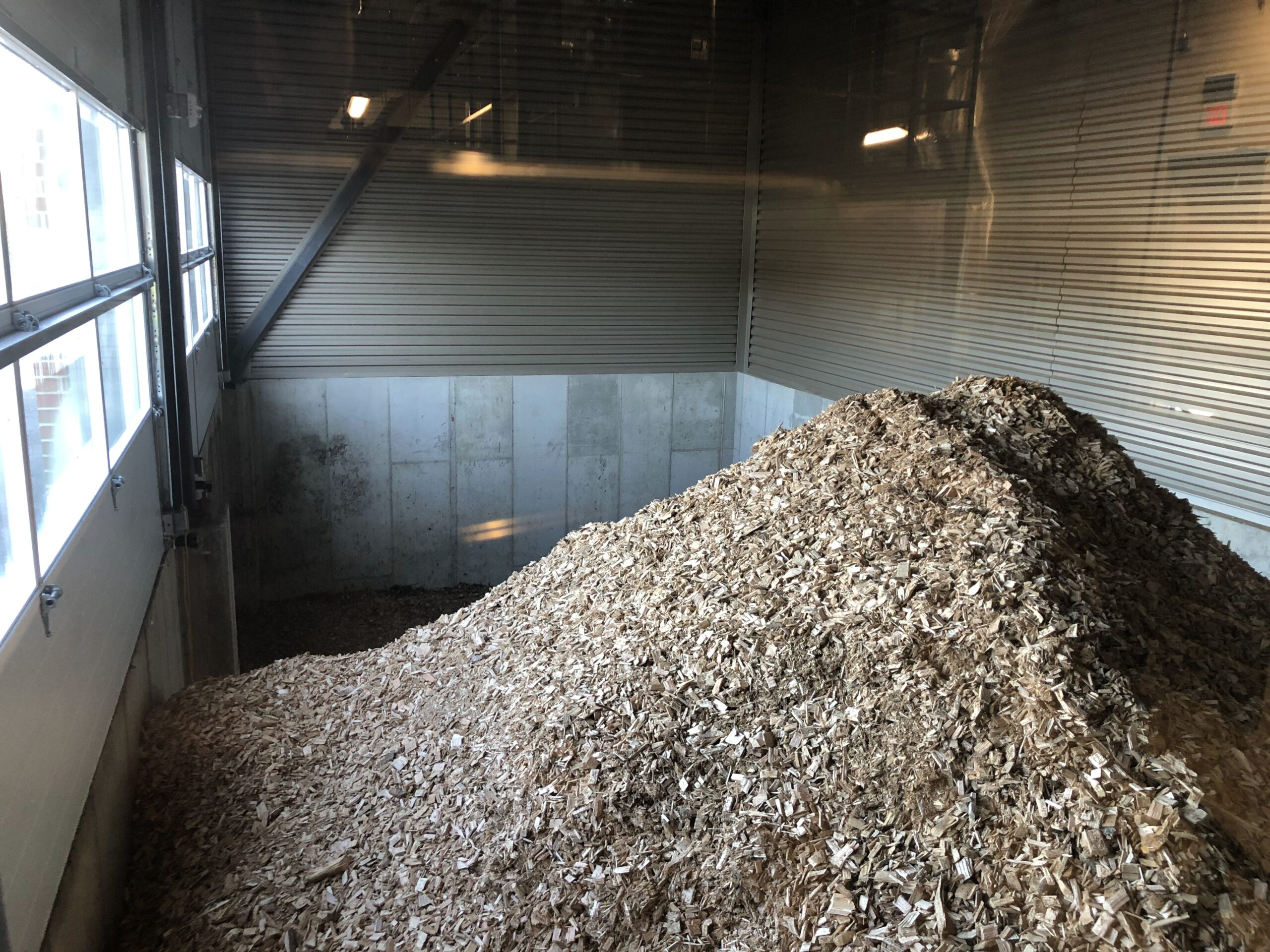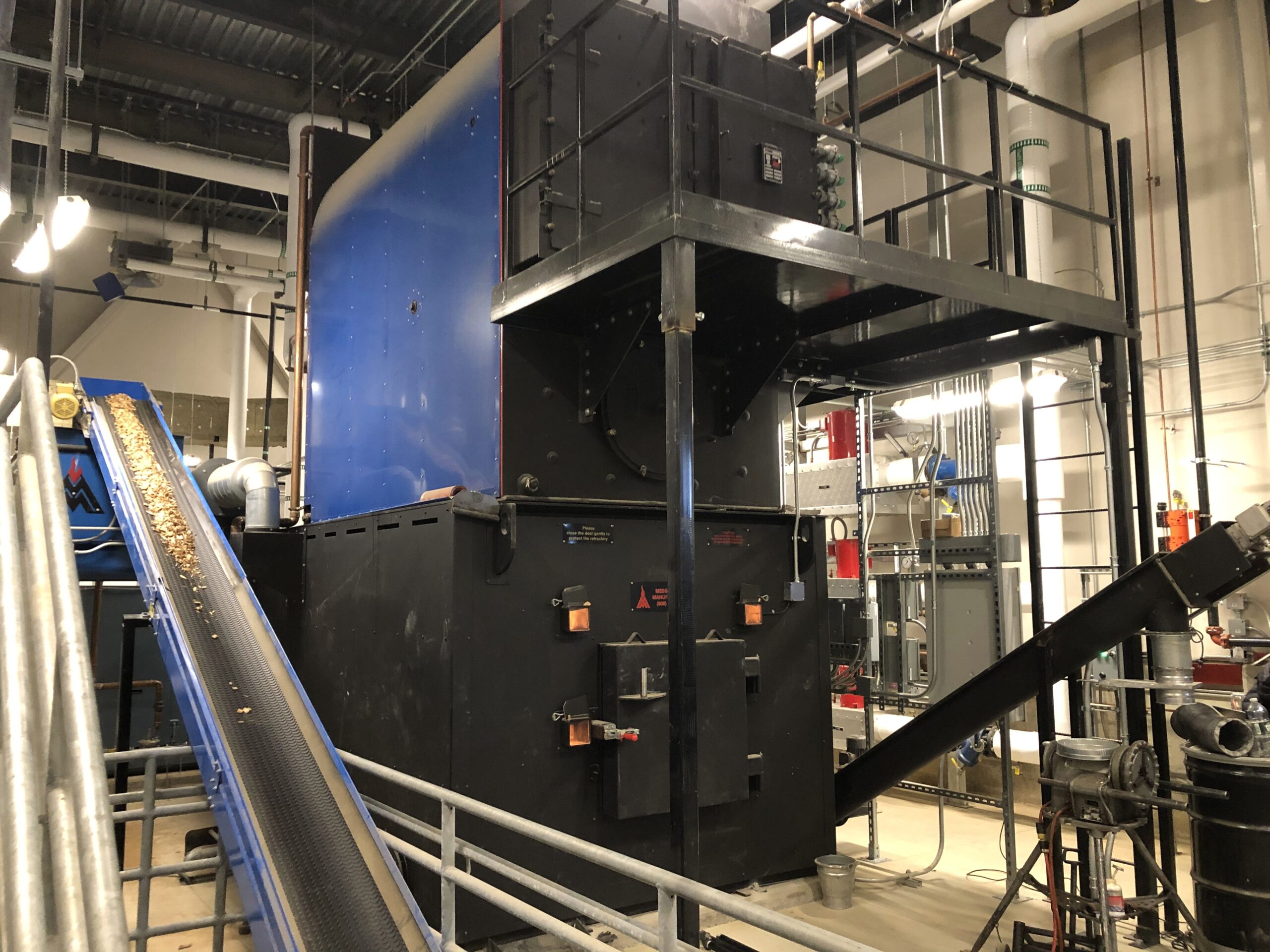Staying Warm in the Land of Lumber (and Moose)
SES was hired by a school district in northern Maine to provide commissioning services for their new 213,000-square-foot middle/high school. One unique aspect of this project was the use of a hybrid central heating plant that combined liquid propane fired boilers and a wood chip fired boiler. This plant provides heating hot water to both the middle and high school, as well as the adjacent elementary school.
The location of the project in northern Maine, being close to several paper and lumber mills, allowed the owner to take advantage of a readily available alternative fuel source for their central heating plant… wood chips!
What Is It?
For those who live in colder climates, you may be familiar with a residential pellet stove used for heating. This stove burns small compressed wood pellets, fed into the stove by a controlled auger system. A wood chip fired boiler is essentially the same concept… but on steroids and with a significantly more elaborate control system. The typical components to a wood chip fired boiler system include:
| · A chip bin with traveling auger | (the controlled auger) |
| · Chip conveyor | |
| · Metering bin and feeding auger | |
| · Stoker auger | |
| · Wood chip boiler (combustor vessel) | (the stove itself) |
| · Combustion air fan(s) | |
| · Combustion ash auger and collection system | |
| · Breeching system | (the “chimney”) |
| · Induced draft fan | |
| · Fly ash cyclone collection system | |
| · Boiler control system | (a fancy thermostat) |
Why Use It?
The key factors that are typically considered for the use of a wood chip fired boiler system are:
- proximity to an available fuel source,
- the inaccessibility or lack of traditional fuels,
- and the economic and environmental benefits.
In the case of this project, the ideal fuel (natural gas) was not an option. Distribution near the site did not exist and fuel oil storage at the site represented its own unique challenges. However, access and availability of wood chips, the byproduct of the lumber and paper industries, was abundant in the region. Further supporting the application, the economic benefit of using wood chips as a fuel can be quite substantial with fuel energy cost savings of 50% or more. Additionally, the environmental benefit for using such a plant is that wood chip boilers and furnaces provide a low-net-CO2 solution. The CO2 emitted during combustion of the wood comes from CO2 absorbed by the tree during its growth vs. the amount of innate CO2 in coal or oil that is from millions of years of decayed plants and animals. With high efficiency burners, other emissions such as NOx (nitrogen oxides) and volatile organic compounds are very low, making these systems one of the most non-polluting heating options available. When burning wood vs. fossil fuels, long-sequestered carbon is not being released into the atmosphere as CO2 (a greenhouse gas.)
At this specific facility this fuel source is a considered a renewable resource and byproduct of the abundant paper and lumber industry in this area and saves the district about $70,000 per year.
Unique Design Considerations
In order to employ such a system at this facility, there were some unique design issues that had to be addressed. A few of these considerations included:
- The need for a separate building to contain the plant due to the storage of fuel and the nature of the plant itself.
- The need of a radiant floor heating system for the chip storage bin floor to prevent the chips from freezing to the storage bin’s concrete floor during winter.
- The need for packaged controls for the wood chip boiler system, developing appropriate sequence of operations and interfacing the packaged controls with the facilities building management system (BMS).
- Specific and precise training for the operating staff to operate and maintain the system effectively.
The construction documents were developed so that all of the wood chip plant equipment was purchased from a single manufacturer. This helped to simplify the design and ensure that the above issues were addressed.
Commissioning of the Plant
Because of the hybrid nature of this plant, the commissioning was implemented in a multi-step process that started in the design phase with a complete design review of the project. This continued with submittal reviews and site visits during the construction phase. Pre-functional checklists (construction checklists) were then developed by SES for use by the installing contractors to verify that the equipment was installed and ready for functional testing. After that, SES developed the functional test sheets to test each sequence of operation from sub systems to system integration and system interaction. Because this plant was a hybrid plant with liquid propane (LP) boilers (intended for summer and shoulder season use) and the wood chip boiler (for use during coldest times of the year), the seasonal operational nature lent itself to testing of the plant in these distinct modes. Testing started with the primary-secondary pumping systems, then the LP boilers functionality, and finally to the wood chip boiler systems. The chip boiler system was then evaluated and functionally tested according to its own sub-components (as mentioned above), leading to a final integrated test that verified the packaged controls and interface with the facilities BMS.
Challenges with the BMS
While the design concept was straight forward and the construction of the plant appeared to progress well, functional testing during the later stages of the commissioning process had its challenges. This started with the fact that the plant had to be brought online ASAP. The middle school portion of the building was already occupied, and the heating season was approaching fast. Additionally, the underground piping to the nearby elementary school was not complete, reducing the available heating load. This led to concerns about having sufficient load to test the wood chip fired boiler. Despite not being ready to functionally test, the plant had to be brought online due to the impending heating season. Being flexible in the commissioning process was important to satisfy the schedule while not allowing the quality control nature of our process to suffer.
Shortly into functional testing it was discovered that the LP boilers’ control interface to the BMS was not complete, along with there being other incomplete items. Further testing revealed that the BMS interface to the wood chip fired boiler controls was also incomplete. Because of the limited BMS interface and the uniqueness of the packaged wood chip boiler controls, the packaged controls were capable of operating the boiler in a stand-alone fashion with minimal operator supervision and allowed the system to operate in a full winter heating mode. Another key benefit of this particular wood chip boiler was the notable turn down ratio of 10:1. This allowed the boiler to modulate down to a low firing rate and properly serve just slightly over one third of the design load on for the system.
In the end, the testing was successfully completed, and the system was placed into operation. There were still a few deficiencies that required correction and verification, but the wood chip fired boiler plant was fired up just in time to keep our future generations warm all winter. Here are a few things to keep in mind if you decide to implement a complex system like the wood chip fired boiler plant into your future project:
- Submittal reviews by the Commissioning Authority are key to clearly defining the system points that require integration into the BMS, and thereby defining who is responsible for those items. The Commissioning team’s review comments are an important yet often overlooked component of the design phase.
- With winter approaching quickly, the contractors had to take a few shortcuts to get the system up and running in time, leading to rushed pre-functional checklists. It is important to remember the goals of pre-functional checklists. They serve as a quality control tool for the construction team to confirm the systems and equipment are completed and ready to operate. They also serve as a notification to the Commissioning Agent that everything is ready for functional testing. With sufficient planning, the integrity and desired outcome of the entire quality control process can be maintained, improving the overall result.
- Having a manufacturer’s technician thoroughly knowledgeable on the packaged controls on their equipment is essential for successful functional testing of the equipment in both a stand-alone mode and interfaced with a facility BMS. In this project the manufacturer’s technician was exactly that, without them the testing of such a system would not have been possible.
Contact us if you would like to learn more about this process or have questions regarding these types of systems, or click here to learn more about our commissioning services.




